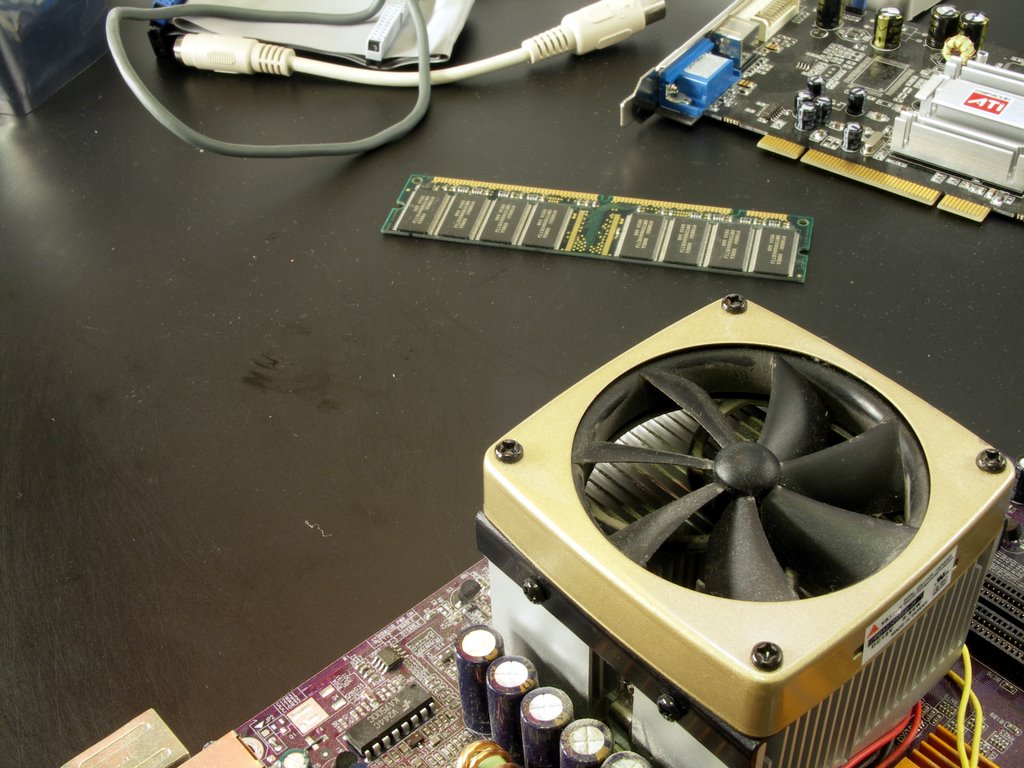There are also limitations. Storing files is peachy. Accessing or altering them? That’s a different story. Yes, there’s crossover between computers and mobile devices. Microsoft Office’s and Adobe’s mobile suites are perfect examples.
Possibility relies on capability. Rendering graphics, running advanced programs: these are the things mobiles cannot do. In fact, software innovations will likely always outpace hardware availability. This is among the global economy’s largest bottlenecks. Less people can consume or contribute because of it.
Surprisingly, that’s changing now. Enter Desktop-as-a-Service.
What is DaaS?
Bandwidth is getting faster. So fast, in fact, that it can remotely stream computer power. Lots of sites and services do this. MMORPGs are probably the best example. There’s a vast gulf between periphery computing and rendering capabilities, though. In plain English? Near all programs rely on primary hardware for graphics.Not so with Desktop-as-a-Service platforms. These things render, process, and run independently of its host hardware. This is not groundbreaking. It is also unknown in consumer markets. Using the right DaaS platform allows users to game,work, and stream without interruption.
There’s plenty incentive for first worlders to roll with DaaS. Professionals can create on the fly. Gamers can play what they want on any device. Media geeks can stream video and then some. Institutions can save money on hardware (lots of money!). Less tech junk will find its way to landfills. Less emissions will be used to create said junk.
However, the implications go far beyond DaaS’s appeal to the first world.
Taking the Global Scope: Today’s Cyber Cafe
It’s easy to forget most of humanity lacks personal computers. Oh sure, there’s desktops. Plenty of them…in cyber cafes. Both the poor and middle class rely on these public terminals. Startups form there. Professional gamers practice there. Most people browse, conduct research, or correspond. That’s all they really can do.All in all, cyber cafes have lots of computers. Most are lousy beyond belief. Frequenters receive what they pay for. Quality runs the gambit, as does security. More affordable places typically have computers bloated with spyware and worse. There’s also an air of territoriality. Cloud storage alleviates the problem, but just a bit. Habitues who use large applications typically have “their” computer. Impinging on their spots carries surprising risks.
Of course, this whole system is bunk. Files disappear. Applications are uninstalled. The only real option is using some mode of storage. Think USB sticks. Entire OSs can now run on those dinky things. Only problem? They do not augment to overall computing power.
DaaS: An Enhancement, A Logical Progression
DaaS undercuts cyber cafes. Just as important, they do so without impeding their appeal. Cafe owners have plenty of reasons to encourage DaaS. It’s an equalizer. Just about any machine can run it. They may also try to capitalize on its premium-ness. New innovations beget new fees, hackneyed as they are.Subscribers can avoid cyber cafes too. Most platforms are completely compatible with tablets and mobiles. These are also far more affordable and pragmatic.Finding sufficient bandwidth is the only potential difficulty. Luckily, that infrastructural hurdle becomes less of a factor each year.

Disparity, Computing Power, Potential
Let’s be honest: capital and information are bedfellows of growth. The internet helps people accrue both those necessities. The greatest benefit of digital products are their intangibility. Computers truly enable us to generate something from nothing. That fact is imperative for the third world.As always, there are also some challenges. Proprietary applications are a necessity. Training, translations, Q/A, and other factors beg consideration. DaaS is not a cohesive enabler of the people, not by any means. But it can help remedy the global disparity of computing power.
This disparity is not the world’s most severe. It is one of the most significant to internal development, though. DaaS will never generate malarial nets or grain unto itself. It can help professionals build capital, though. Capital, in turn, that can help them solicit donations or purchase goods.
Most third world nations’ hopeless scenarios, unfortunately, is what makes DaaS significant. Crushing World Bank loans stifle state spending. Foreign interests control key economic sectors. Graft is overwhelming and destructive. Consider, for instance, the illegal dumping of toxic waste.
The internet offers global access to fonts of capital. Disenfranchised masses once exclusively dependent on a national economy can look elsewhere. Interested investors can connect with local entrepreneurs. Just look at the explosive growth of microloans. Those efforts are a step in the right direction. They also lack the long term feasibility of developing an information-based economy. The third world will remain as such until they develop stronger patents, and more of them. DaaS enables this for significantly less overhead.
Detractions and Prospects Intertwine
The “silent data revolution” is negligible for most of us. It dictates what pop-ups we get on facebook. Whoopee. But the monetization of user behavior is more intricate than ever. With time, it will grow only more sophisticated.Infocentral
For all its pros, however, DaaS has some questionable aspects. First and foremost, it concentrates information like never before. While private and secure, count on platforms to analyze user stats.Not that such considerations prevents professionals from using Drive. Most computer users don’t feel monitoring is exploitive. Makes sense. Who feel exploited by sociologists? But if sentiment ever changes then DaaS may fall into the same critique as generic tech giants.
Cost
There’s also the question of cost. DaaS is statedly more affordable than buying hardware. A hypothetical $20 per month costs $240 per year. Most midrange gaming desktops, meanwhile, cost $700 or more. Such hardware becomes incapable of running games or programs after a few years. So DaaS is more affordable for consumers and independent contractors.On the other hand, its feasibility for working professionals is questionable. Multiply $20 by 12 and the cost quickly equals that of a server. Not ones to be left out of the loop, Nvidia is introducing its own streaming solution. Ditto for a number of OSs. This offers comparable results without any charges but those upfront.
The Future and the Benefits
Whatever DaaS’s markets, some things are certain. It can change how we compute. It also enables a slew of consumers and small entrepreneurs. It broadens digital consumption. Developers benefit significantly. The environmental costs are negligible compared to hardware manufacturing. Seems like a thumbs up to me.Photo Credits: George Thomas & ctitze via Creative Commons.



